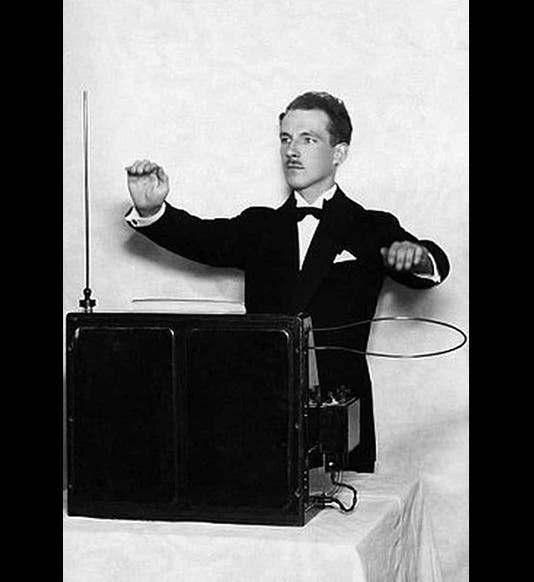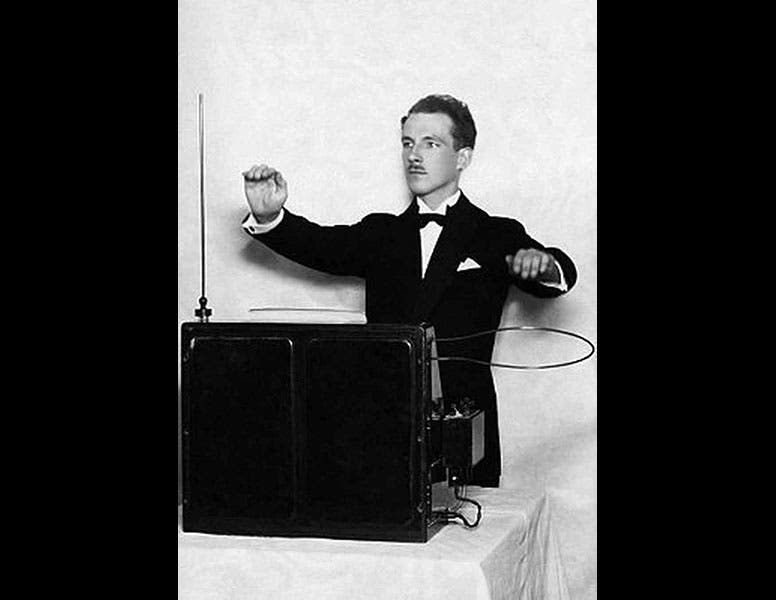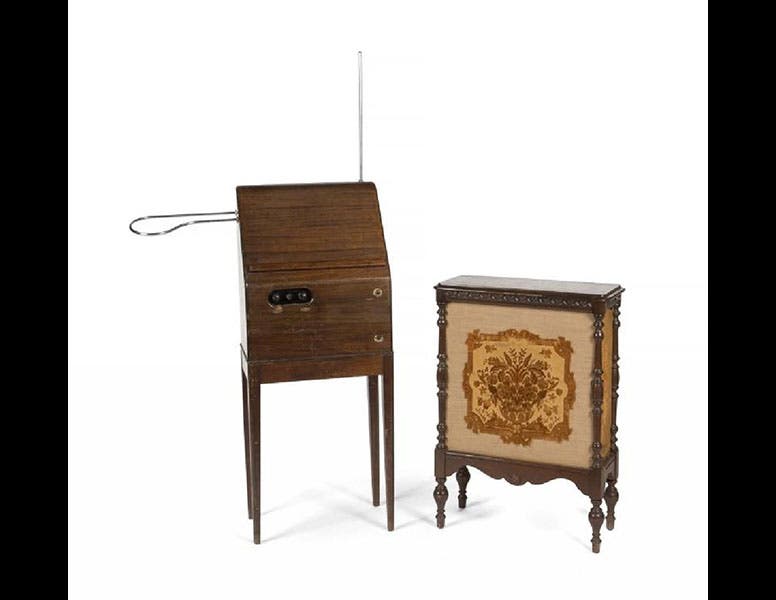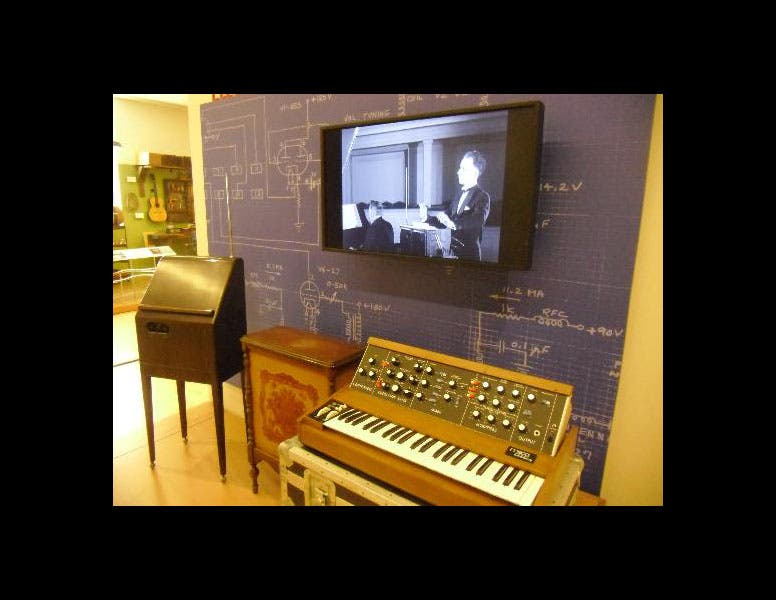Scientist of the Day - Leon Theremin
Léon Theremin, a Russian inventor, was born Aug. 27, 1896. Theremin was an electronic whiz, in the days when electronics was a brand-new field. Around 1920, fooling around with an amplifier circuit, Theremin discovered that when he moved his hand closer to the antenna, the frequency changed. Very soon, he had invented a new kind of musical instrument. It had two sensitive antennas; one controlled pitch, and the other, volume. The performer played it by moving his or her hands near (but not on) the antennas, looking rather like a maestro conducting with both hands. The first image above shows Theremin playing his instrument. The resulting sound was eerie and other-worldly, unlike any musical instrument then in existence. This was the world's first electronic music.
Theremin came to the United States in 1927, patented his instrument, and went on tour. In the U.S., his instrument came to be called a theremin. He leased manufacturing rights to RCA, which started selling production models in 1929. In the second image above, we see an original RCA theremin and its accompanying speaker (RCA launched its theremin just before Black Thursday; they marketed only 500 instruments before production was halted by the Depression. The set above was owned by Neil Young).
The theremin was a very popular instrument, and soon there were virtuoso performers, like Clara Rockmore, who were able to get astounding sounds from the theremin (Theremin wooed the talented Clara, but unsuccessfully). There are no video recordings of these early thereminists, but we do have videos of some of the next-generation protégées, such as Lydia Kavina, who here plays "Claire du Lune". This is a duet, so the part that sounds like a piano, is a piano. The part that sounds like nothing on earth - that's the theremin.
Theremin music, with its unearthly sound, naturally made appearances in science fiction films, most notably, The Day the Earth Stood Still (1951), where a theremin accompanies the robot Gort when he emerges from the space ship. Lots of other sci-fi films have theremin music in their sound tracks, but NOT Star Trek. What sounds like a theremin in the opening credits is in fact a soprano imitating a theremin, which is quite a trick.
Theremin returned to Russia for a while (where he devised a passive listening device that was hidden in a wooden plaque and installed in the U.S. embassy in 1945; it spied for 7 years before being discovered), then returned to the United States, where he lived to the age of 97. Clara Blackmore's theremin, an original 1930 RCA model, is on display at the Musical Instrument Museum in Phoenix (third image; the theremin is on the left; the instrument on the right is the first Moog synthesizer. Robert Moog was a great champion of the theremin).
You can buy your own theremin on Amazon for less than $400, and shipping is free.
Dr. William B. Ashworth, Jr., Consultant for the History of Science, Linda Hall Library and Associate Professor, Department of History, University of Missouri-Kansas City. Comments or corrections are welcome; please direct to ashworthw@umkc.edu.









